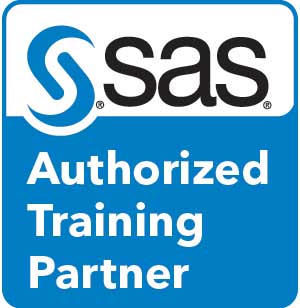UPSC Civil Services Exam Pattern | Prelims, Mains And Interview
Every year the Union Public Service Commission (UPSC) conducts the Civil Services Examination every year for recruitment to various prestigious positions in the Government of India. This article aims to give the reader an overview of the UPSC exam pattern and syllabus.
Overview of Civil Services/UPSC Exam Pattern
| Name of the exam | Civil Services Exam- IAS |
| Conductiong authority | Union Public Service Commission |
| Mode of exam | Offline |
| Number of Stages | Prelims Mains Exam Interview |
| Number of papers | Prelims: 2 Mains :9 |
| Prelims marking scheme | Paper 1: +2 marks per question Paper 2: +2.5 marks per question Negative marking: One-third of marks allotted to each question |
| Duration | Prelims: 2 hours (Each paper) Mains: 3hours (Each paper) |
| Type of Questions | Prelims: Objective type Mains: Subjective type |
| Post | 1000 approximate (Tentative) |
List of Optional Subjects for Mains Exam
Candidates can choose any one optional subject from the list below:
- Agriculture
- Animal Husbandry and Veterinary Science
- Anthropology
- Botany
- Chemistry
- Civil Engineering
- Commerce and Accountancy
- Economics
- Electrical Engineering
- Geography
- Geology
- History
- Law
- Management
- Mathematics
- Mechanical Engineering
- Medical Science
- Philosophy
- Physics
- Political Science and International Relations
- Psychology
- Public Administration
- Sociology
- Statistics
- Zoology
- The literature of any one of the following languages: Assamese, Bengali, Bodo, Dogri, Gujarati, Hindi, Kannada, Kashmiri, Konkani, Maithili, Malayalam, Manipuri, Marathi, Nepali, Odia, Punjabi, Sanskrit, Santhali, Sindhi, Tamil, Telugu, Urdu and English.
UPSC Exam Pattern 2021
The pattern of UPSC examination is officially divided into two stages called Preliminary and Main Examination while in practice, it is a three-stage exam.
As per the IAS exam pattern, candidates who clear the Prelims are eligible for Mains, and candidates who clear the Main reach the interview stage.
The three stages of the IAS exam are Prelims, Mains and Personality Test.
IAS exam pattern for UPSC Prelims
The UPSC exam pattern for the Preliminary stage consists of two papers, conducted on one day. Both the papers comprise objective type questions with multiple choice of answers. The prelims examination is a qualifying stage to filter candidates for the mains exam.
| Paper | Type | No. of questions | Marks | Duration | Negative marks |
| General Studies I | Objective | 100 | 200 | 2 hours | Yes |
| General Studies II (CSAT) | Objective | 80 | 200 | 2 hours | Yes |
Paper I – (200 marks) Duration : Two hours
- Current events of national and international importance.
- History of India and Indian National Movement.
- Indian and World Geography – Physical, Social, Economic Geography of India and the World.
- Indian Polity and Governance – Constitution, Political System, Panchayati Raj, Public Policy, Rights Issues, etc.
- Economic and Social Development – Sustainable Development, Poverty, Inclusion, Demographics, Social Sector initiatives, etc.
- General issues on Environmental Ecology, Biodiversity and Climate Change – that do not require subject specialization
- General Science.
Note: There will be a penalty (negative marking) for wrong answers
Paper II- (200 marks) Duration: Two hours
- Comprehension
- Interpersonal skills including communication skills.
- Logical reasoning and analytical ability
- Decision-making and problemsolving
- General mental ability
- Basic numeracy (numbers and their relations, orders of magnitude, etc.) (Class X level), Data interpretation (charts, graphs, tables, data suffi ciency etc. – Class X level).
- English Language Comprehension skills (Class X level).
Note 1: Questions relating to English Language Comprehension skills of Class X level (last item in the Syllabus of PaperII) will be tested through passages from English language only without providing Hindi translation thereof in the question paper.
Note 2: The questions will be of multiple choice, objective type.
IAS Exam Pattern for UPSC Mains
IAS mains is an offline exam. UPSC Mains stage consists of 9 papers conducted over 5-7 days. every paper is of 3 hours and extra 30 minutes extra is given to blind students. 1750 is the total marks for the main examination.
Qualifying Paper
- Paper A – One of the Indian languages included in the VIII Schedule in the Constitution 300 Marks.
- Paper B – The 2nd exam is an English paper. And it also carries 300 marks.
| Paper | Subject | Duration | Total marks |
| Paper A | Compulsory Indian language | 3 hours | 300 |
| Paper B | English | 3 hours | 300 |
| Paper I | Essay | 3 hours | 250 |
| Paper II | General Studies I | 3 hours | 250 |
| Paper III | General Studies II | 3 hours | 250 |
| Paper IV | General Studies III | 3 hours | 250 |
| Paper V | General Studies IV | 3 hours | 250 |
| Paper VI | Optional I | 3 hours | 250 |
| Paper VII | Optional II | 3 hours | 250 |
OPTIONAL SUBJECTS
| Agriculture | Animal Husbandry and Veterinary Science | Anthropology | Botany | Chemistry |
| Civil Engineering | Commerce and Accountancy | Economics | Electrical Engineering | Geography |
| Geology | History | Law | Management | Mathematics |
| Mechanical Engineering | Medical Science | Philosophy | Physics | Political Science and International Relations |
| Psychology | Public Administration | Sociology | Statistics | Zoology |
UPSC Interview
final stage of the UPSC/IAS Exam before the final results are declared. Officially it is called the Interview/Personality Test and counted as a part of the Mains Examination for merit ranking purposes.
Also Read:-











